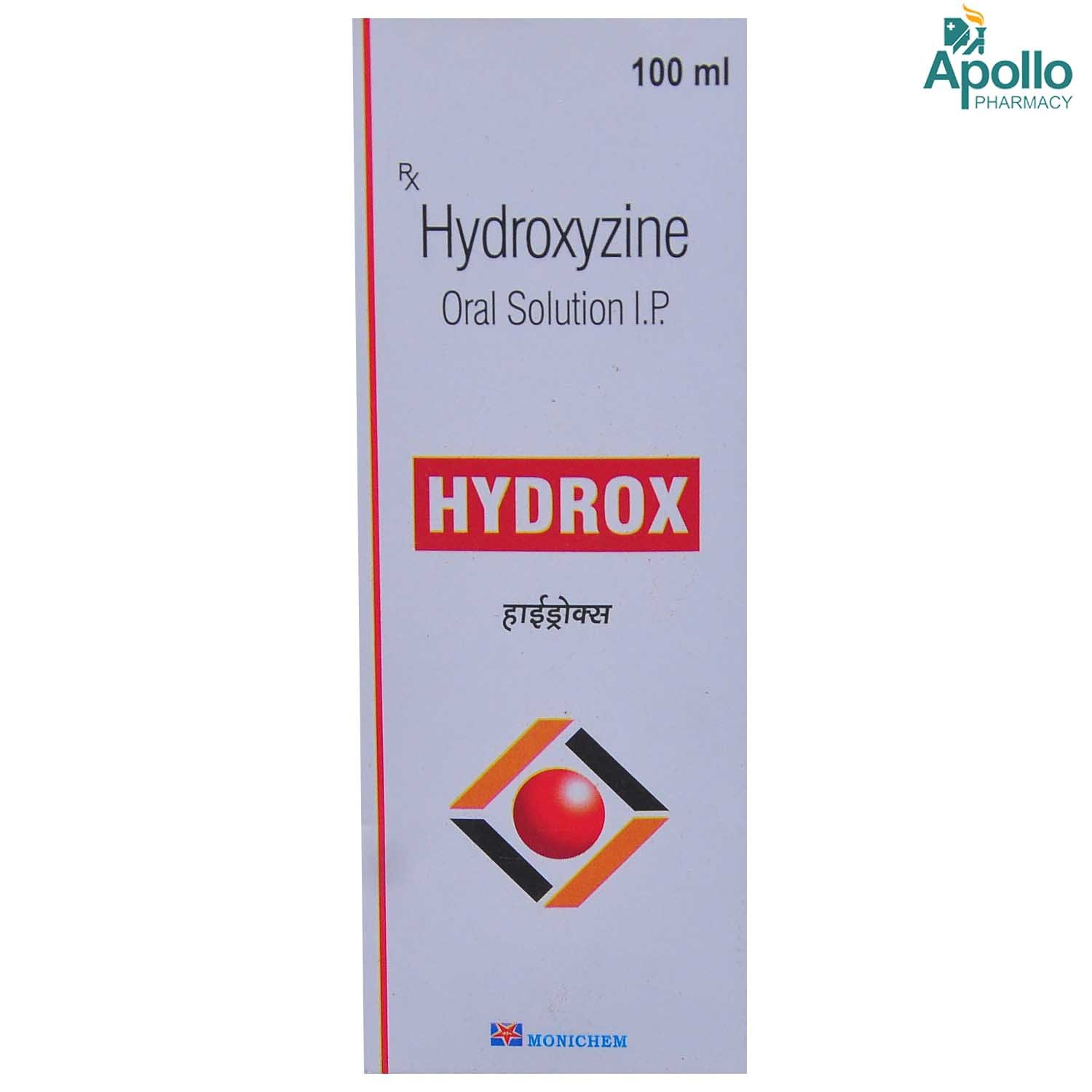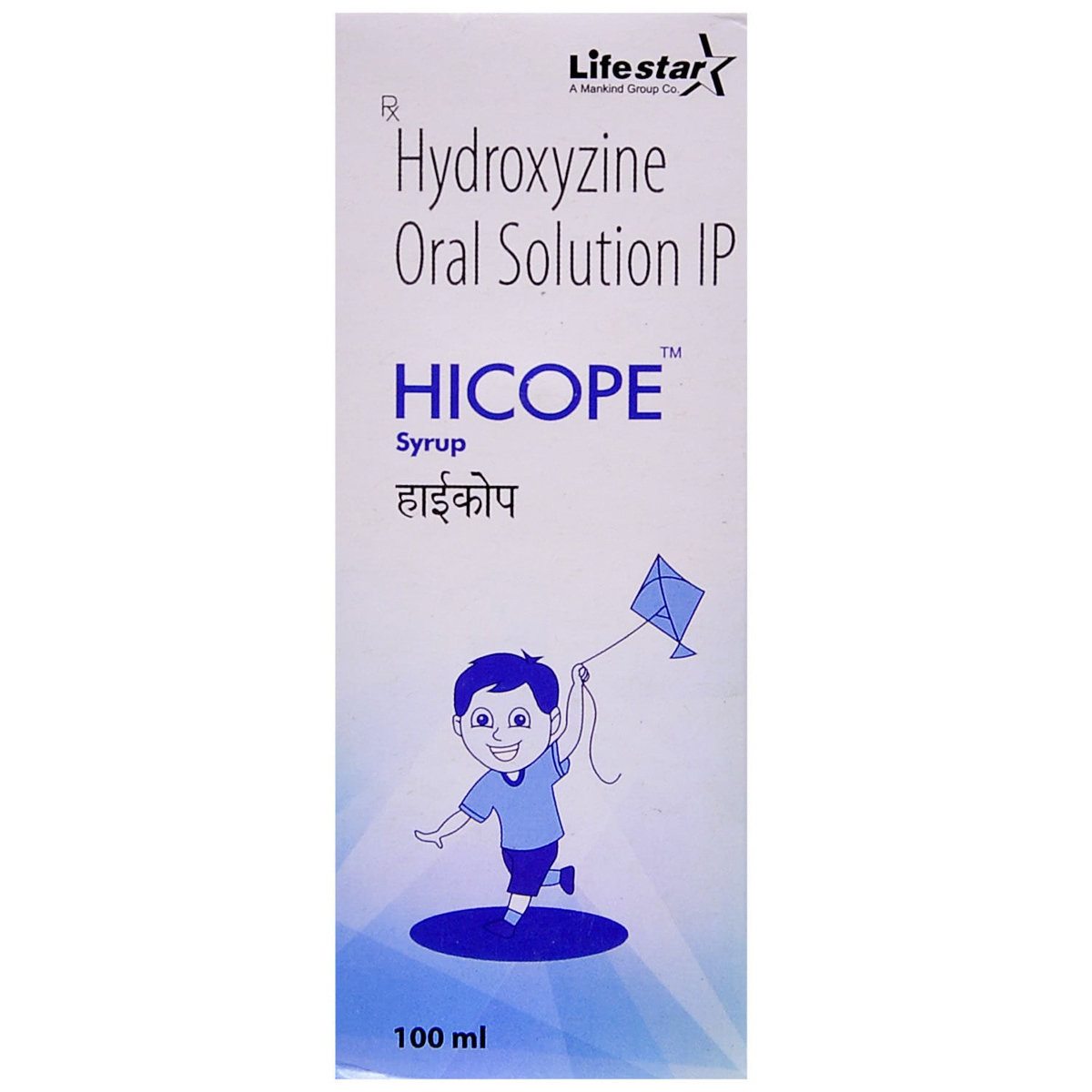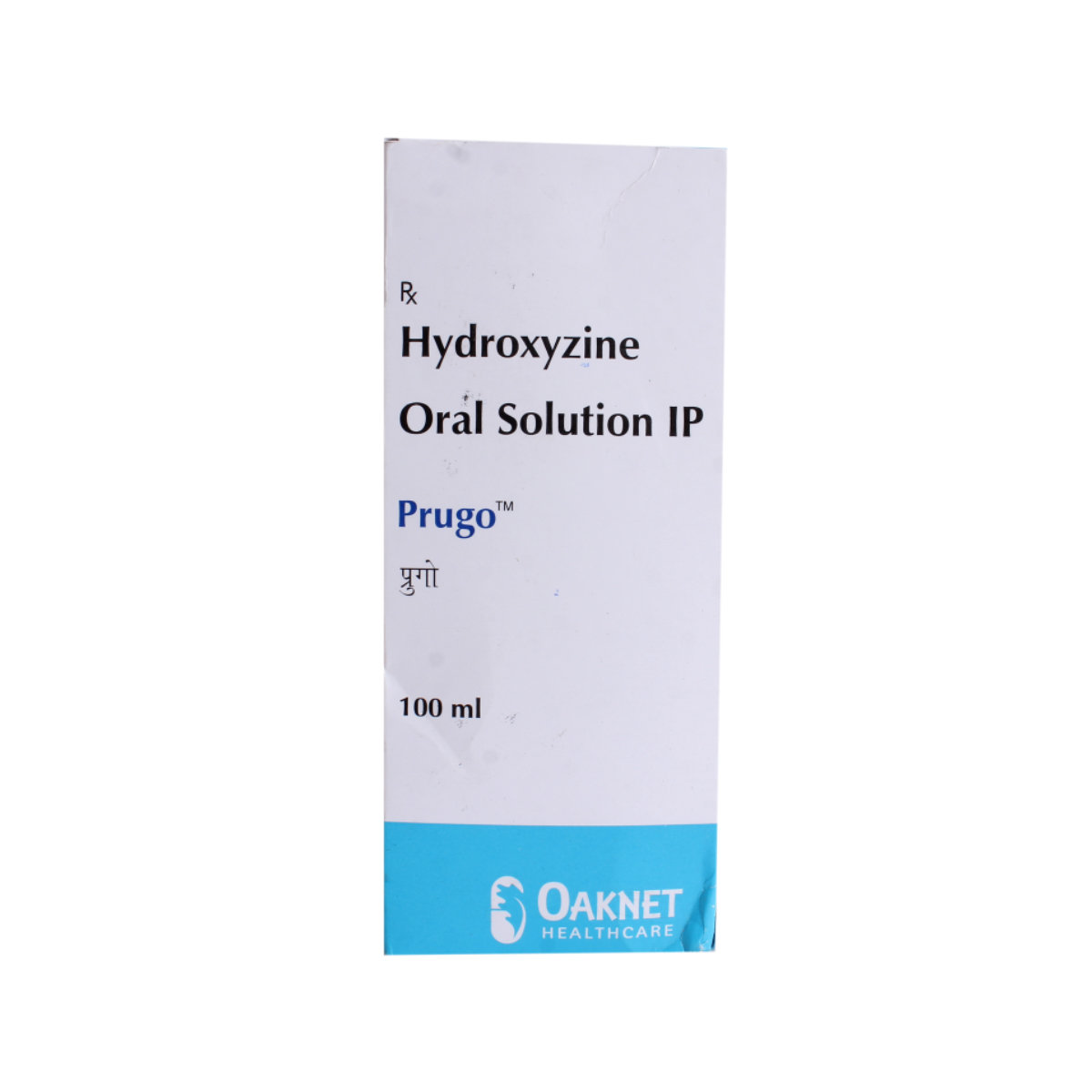- Home
- Atarax Syrup
Atarax Syrup Substitute
Atarax Syrup Substitute
Medicine Composition:
HYDROXYZINE-10MGAll Substitutes & Brand Comparisons
RX
Out of StockAnzine 10mg Syrup
₹65
(₹0.59/ 1ml)
52% CHEAPERRX
Out of StockAtoxy 10mg Syrup
₹75
(₹0.68/ 1ml)
44% CHEAPERRX
Averzine Syrup 100 ml
Canixa Life Sciences Pvt Ltd
₹80
(₹0.72/ 1ml)
41% CHEAPERRX
Out of StockAtazis Syrup
Leeford Healthcare Ltd
₹80
(₹0.72/ 1ml)
41% CHEAPERRX
Hydrox Syrup 100 ml
Monichem Healthcare Pvt Ltd
₹84
(₹0.76/ 1ml)
38% CHEAPERRX
Out of StockAtawis 10mg Syrup
₹85
(₹0.77/ 1ml)
37% CHEAPERRX
Hicope Syrup 100 ml
Mankind Pharma Pvt Ltd
₹89
(₹0.8/ 1ml)
34% CHEAPERRX
Out of StockAtarise Syrup 100 ml
Healing Pharma
₹90
(₹0.81/ 1ml)
34% CHEAPERRX
Hyrax Syrup 100 ml
Palsons Derma Pvt Ltd
₹92.5
(₹0.83/ 1ml)
32% CHEAPERRX
Prugo Syrup 100 ml
Cosme Healthcare
₹93
(₹0.84/ 1ml)
31% CHEAPERRX
Out of StockAtanec 10 Syrup 100 ml
Nectar Lifesciences Ltd
₹93.5
(₹0.84/ 1ml)
31% CHEAPERRX
Out of StockAtoxyzine 10mg Syrup 100 ml
Prevego Healthcare & Research Pvt Ltd
₹85
(₹0.85/ 1ml)
30% CHEAPERRX
Out of StockDrozin Syrup 100 ml
Floris Skincare
₹85
(₹0.85/ 1ml)
30% CHEAPERRX
Out of StockAtser 10mg Syrup
₹101
(₹0.91/ 1ml)
26% CHEAPERRX
Out of StockAtarax Syrup Delicious Strawberry
Dr Reddy's Laboratories Ltd
₹110.25
(₹0.99/ 1ml)
19% CHEAPER

When Should You Consider Switching from Atarax Syrup ?
Patients may explore substitutes in the following scenarios:
- High monthly cost of Atarax Syrup
- Non-availability in local pharmacies
- Generic recommendation by a doctor
- Side effects or better tolerability with alternatives
What to Know Before Switching
Before you switch from Atarax Syrup to another medicine, here are some important points to keep in mind:
Same salt, different brands:
Most substitutes contain the same active ingredient - HYDROXYZINE-10MG, but the fillers, coating, or manufacturing quality may vary slightly.
Consult your doctor first:
Even if the salt is the same, your doctor can confirm if the substitute is right for your condition, dosage, and health history.
Watch out for allergies or reactions:
Some people may react differently to certain brands due to inactive ingredients. If you notice any side effects, inform your doctor immediately.
Price ≠ effectiveness:
A lower-priced substitute doesn't mean it's less effective. Many generic medicines work just as well as branded ones.
Check the dosage form and strength:
Always match the substitute’s strength (e.g., 5mg, 10mg) and form (tablet, capsule, syrup) with what your doctor prescribed.
Uses
Atarax Syrup is used to treat allergic skin conditions and anxiety. The detailed uses of Atarax Syrup are as follows:
- Anxiety Relief: Atarax Syrup helps relieve anxiety by calming the brain, making it an effective treatment for anxiety disorders and tension relief.
- Allergy Relief: Atarax Syrup provides allergy relief by blocking histamine, effectively treating symptoms such as itching, hives, or eczema caused by an allergic reaction.
- Nausea and Vomiting: Atarax Syrup helps prevent and treat nausea and vomiting, often associated with surgery or medical procedures, offering relief from these symptoms.
- Pre-surgery medication: Atarax Syrup is used as a pre-surgery medication, such as before a dental procedure.
Medicinal Benefits
- Atarax Syrup is indicated in the management of anxiety and tension associated with psychoneurosis.
- It is used as an adjunct in organic disease states in which anxiety is manifested; pruritus due to allergic conditions like atopic, contact dermatoses, chronic urticaria, and in histamine-mediated pruritus.
- Besides this, it is also used as a pre-surgery medication, such as in preparation for dental procedures.
- Atarax Syrup contains Hydroxyzine, an antihistamine that blocks histamine receptors responsible for allergic symptoms.
- It also affects the brain's chemical messengers, such as serotonin. Thereby, Atarax Syrup helps treat anxiety.
FAQs
The substitutes of Atarax Syrup contain the same active salt(s) - HYDROXYZINE-10MG. However, they may differ in price, manufacturing quality, and inactive ingredients. Speak to your doctor to find a suitable option.
Switching to a generic substitute medicine in the place of Atarax Syrup is often possible if it has the same salt, strength, and dosage form. But always check with your doctor before making any changes to your medication.
Generics versions of Atarax Syrup are typically more affordable because they don’t include the original brand's research, development, and marketing costs. They contain the same active ingredient and are approved for safety and effectiveness.
Most people don’t notice any difference. However, some may react to different fillers or coatings. If you notice any unusual symptoms after switching, consult your doctor.
Make sure the new medicine has the same active salt, strength, dosage form. Always confirm the change with your doctor or pharmacist.
Substitutes of Atarax Syrup meet the same safety and efficacy standards as Atarax Syrup , but small differences in absorption or formulation can exist. A doctor can help you choose the right one for your needs.
Yes. Substitutes of Atarax Syrup may vary in color, size, or shape due to differences in manufacturing and branding, but this does not affect how they work.
Yes, it’s generally safe to switch between multiple substitutes of Atarax Syrup if they have the same salt and strength. However, always inform your doctor so they can monitor how your body responds.
Yes, many people safely use substitutes of Atarax Syrup for long-term treatment. Just ensure it’s done under medical supervision.
If your symptoms stay under control or lab results remain stable, the substitute for Atarax Syrup is likely working well. Regular follow-ups with your doctor are important.
Absolutely. Even with the same salt, small differences can affect how your body responds when switching from Atarax Syrup to its substitute. Always consult your doctor before switching.
Atarax Syrup is indicated in the management of anxiety, pruritus due to allergic conditions, control of nausea and vomiting, and as a pre-medication, such as preparation for dental procedures.
Atarax Syrup contains Hydroxyzine, an antihistamine that blocks histamine receptors responsible for allergic symptoms. It also affects the brain's chemical messengers, such as serotonin. Thereby, Atarax Syrup helps treat anxiety.
Atarax Syrup may be associated with an increased risk of rhythm disorder, which can be serious. If you have heart problems, please inform your doctor before taking Atarax Syrup .
Before starting Atarax Syrup , please inform your doctor of any other health problems, such as kidney, heart, or liver issues, as dose adjustment may be required in some cases. Also, mention all other medications you are taking, as some might affect how Atarax Syrup works. Tell your doctor if you are pregnant, planning to get pregnant, or breastfeeding.
Atarax Syrup contains Hydroxyzine, an antihistamine. It works by blocking the histamine receptor's action, which is responsible for allergic symptoms. Thus, it plays a vital role in treating allergic reactions effectively.
Atarax Syrup is safe if used in the dose and duration recommended by your doctor. Take it exactly as directed and do not skip any doses. Follow your doctor's guidelines carefully and inform your doctor if any side effects disturb you.
Take the missed dose as soon as you remember, unless it's almost time for your next dose. In this case, skip the missed dose and take your next dose at the regular time. Never take a double dose to make up for a missed one.
Sometimes, this medicine may cause side effects such as drowsiness, flushing, dry mouth, headache, and itching. Most of these side effects do not require medical attention and gradually resolve over time. However, if the side effects persist or worsen, please consult your doctor.
Buy best C.n.s Drugs products by
Intas Pharmaceuticals Ltd
Sun Pharmaceutical Industries Ltd
Torrent Pharmaceuticals Ltd
Alkem Laboratories Ltd
Alteus Biogenics Pvt Ltd
Abbott India Ltd
Cipla Ltd
Micro Labs Ltd
Lupin Ltd
Tripada Healthcare Pvt Ltd
D D Pharmaceuticals Pvt Ltd
Ipca Laboratories Ltd
Arinna Lifesciences Ltd
Icon Life Sciences
Linux Laboratories Pvt Ltd
Mankind Pharma Pvt Ltd
Cnx Health Care Pvt Ltd
East West Pharma India Pvt Ltd
La Renon Healthcare Pvt Ltd
Emcure Pharmaceuticals Ltd
Eris Life Sciences Ltd
Leeford Healthcare Ltd
Talent India Pvt Ltd
Consern Pharma Ltd
Tas Med India Pvt Ltd
Macleods Pharmaceuticals Ltd
Zydus Healthcare Ltd
Jagsam Pharma
Troikaa Pharmaceuticals Ltd
Dr Reddy's Laboratories Ltd
Ikon Pharmaceuticals Pvt Ltd
Matias Healthcare Pvt Ltd
Sigmund Promedica
Aristo Pharmaceuticals Pvt Ltd
Ardent Life Sciences Pvt Ltd
Shine Pharmaceuticals Ltd
Zydus Cadila
Theo Pharma Pvt Ltd
Wockhardt Ltd
Propel Healthcare
Lifecare Neuro Products Ltd
Crescent Formulations Pvt Ltd
Mesmer Pharmaceuticals
Matteo Health Care Pvt Ltd
Reliance Formulation Pvt Ltd
Morepen Laboratories Ltd
Ajanta Pharma Ltd
Capital Pharma
Neon Laboratories Ltd
Med Manor Organics Pvt Ltd
Akumentis Healthcare Ltd
Lyf Healthcare
Msn Laboratories Pvt Ltd
Sanix Formulation Pvt Ltd
Pulse Pharmaceuticals
Brainwave Healthcare Pvt Ltd
Hetero Healthcare Pvt Ltd
Cyrus Remedies Pvt Ltd
Sanofi India Ltd
Solvate Laboratories Pvt Ltd
Elder Pharmaceuticals Ltd
Novartis India Ltd
Psyco Remedies Ltd
Medishri Healthcare Pvt Ltd
Quince Lifesciences Pvt Ltd
Alniche Life Sciences Pvt Ltd
Crescent Therapeutics Ltd
Hbc Life Sciences Pvt Ltd
Mova Pharmaceutical Pvt Ltd
Prevego Healthcare & Research Pvt Ltd
Cadila Healthcare Ltd
Tripada Lifecare Pvt Ltd
Alembic Pharmaceuticals Ltd
Solis Pharmaceuticals
Talin Remedies Pvt Ltd
Kivi Labs Ltd
Serotonin Pharmaceuticals Llp
Glenmark Pharmaceuticals Ltd
Infivis Life Care
Aareen Healthcare Pvt Ltd
Trion Pharma India Llp
A N Pharmacia Laboratories Pvt Ltd
Gagnant Healthcare Pvt Ltd
Primus Remedies Pvt Ltd
Crescent Pharmaceuticals
Glarizonto Pharma Pvt Ltd
Knoll Healthcare Pvt Ltd
Lyceum Life Sciences Pvt Ltd
Wallace Pharmaceuticals Pvt Ltd
Zuventus Healthcare Ltd
Arches Pharmaceuticals
Cadila Pharmaceuticals Ltd
Divine Savior Pvt Ltd
Lia Life Sciences Pvt Ltd
Lincoln Pharmaceuticals Ltd
USV Pvt Ltd
Vasu Organics Pvt Ltd
Corona Remedies Pvt Ltd
Glial Life Science Llp
Maneesh Pharmaceuticals Ltd





